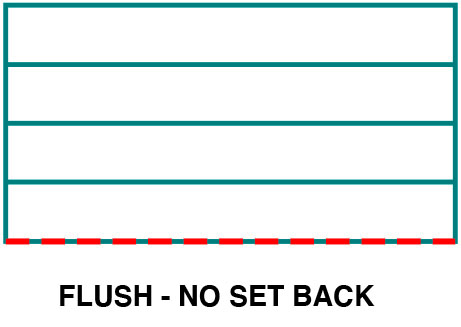The Tara Pool & Outdoor Products Blog
Liner Vocabulary
The terms used to describe different measurements or parts of the pool can vary across different regions, manufacturers and product categories. We put together a list of terms that we often get asked about. Below is the definitions for some of the most common terms we use in liner manufacturing.
| Back slope- the slope from the hopper pad to the end of the pool wall. | 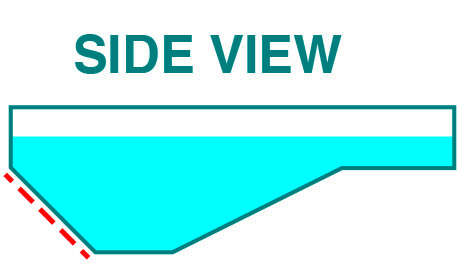 |
|
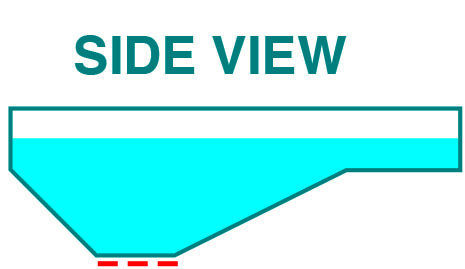 |
Hopper Pad - the flat area at the deepest section of the pool. | |
| Shallow End Break-over - the edge where the transition slope meets the shallow end. | 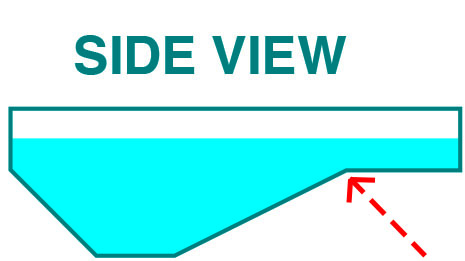 |
|
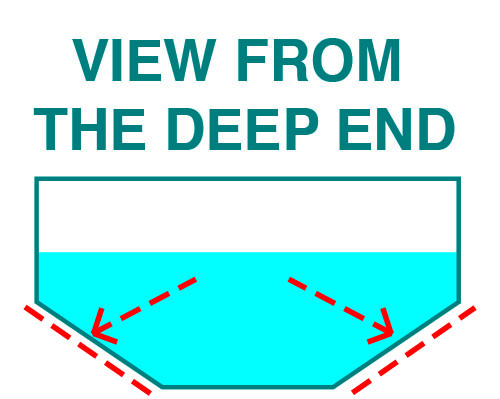 |
Side Slope - the slope from the hopper pad to the side wall of the pool. | |
| Transition Slope - the slope that connects the shallow end to the deep end of the pool. | 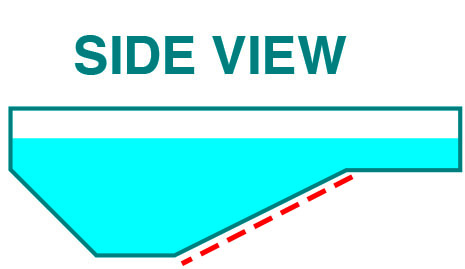 |
|
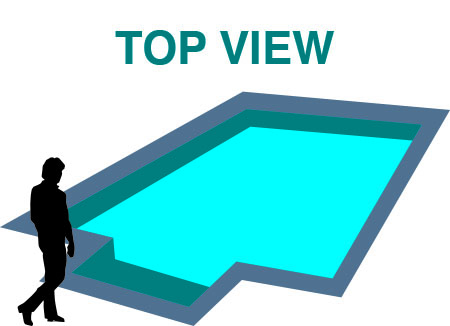 |
Orientation- the determination of the “Hand” of the pool. This may vary from manufacturer to manufacturer and you must be aware of this. The reference can be from the shallow end or the deep end of the pool. Each will give you a different hand for the same pool. Tara determines direction from the shallow end. | |
|
Finished Depth - The depth of the deep end and of the shallow end with a sand or vermiculite bottom, level and ready for a liner, or the depth to an existing liner from the bead or bead receiver to the pool floor. |
 |
|
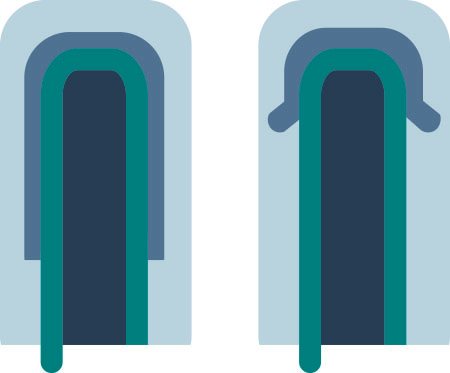 |
Bead - Thick, usually wedge shaped strip on the top of the wall to hold the liner in the receiver. Usually it is a good idea to send us a SAMPLE of the bead if it is rounded or hook shaped or if you are not sure if it is standard bead. There are many different types of bead. |
|
|
Bead Receiver (Bead Track) - Small opening all around the pool beneath the coping into which the bead snaps. All depth measurements are taken from here. |
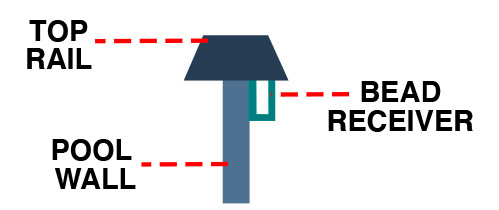 |
|
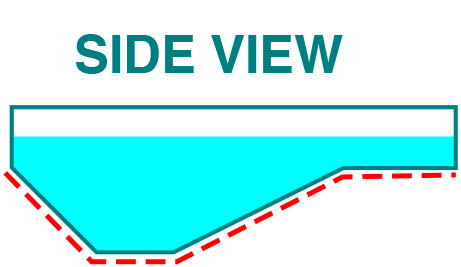 |
True Length - This is NOT the length of the pool. This is the length of a slope or the bottom of a pool down one slope across the bottom and up the other slope. In other words, from the bottom of one wall to the bottom of the opposite wall keeping your tape measure on the ground. Do not give this measurement except with a bowl shaped hopper or if we request it. |
|
|
Break Line (Break Point) - Any place on the floor of the pool where the angle changes. |
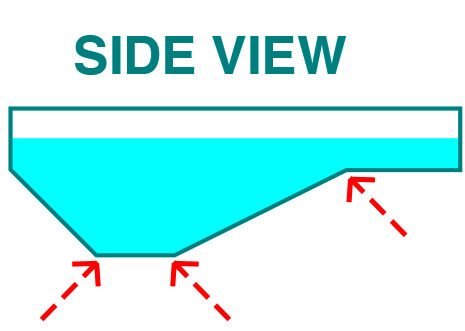 |
|
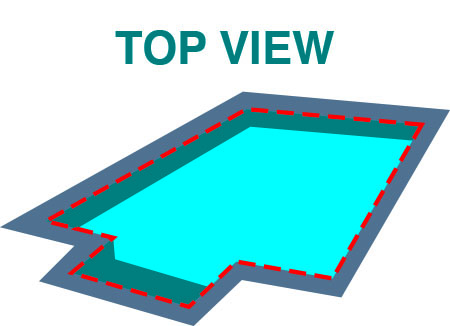 |
Coping - The "cap" at the top of the wall at deck level, often extending past the plane of the wall and into the pool. | |
|
Step Cut - is not the seam location on a step it is the section on a pool with a round wall in the shallow end ie. oval, round, kidney, etc. where the fiberglass step is located or a corner plastic step that has a straight face. |
 |
|
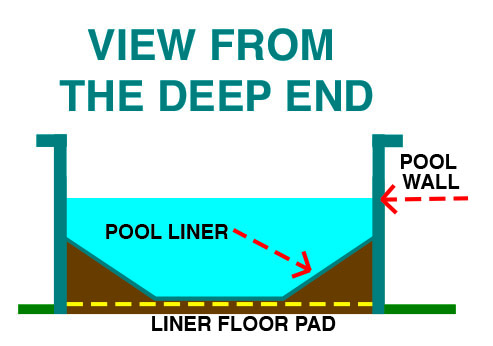 |
Cove - angled area at the bottom of the vertical wall in the shallow end. Typically used to produce a shallow end depth greater than the wall height. | |
|
Safety Ledge (Toe Ledge) - a flat area about 8" wide that wraps around the wall of the pool from the shallow end break around the deep end and back to the other shallow end break. |
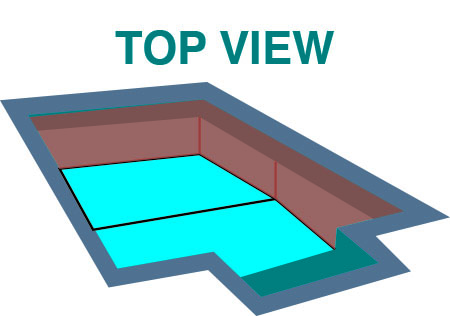 |
|
 |
Slope (Ramp) - the section of the pool floor that transitions from the shallow end to the deep end. | |
| Back Wall - the wall of the pool on the opposite side of the shallow end. | 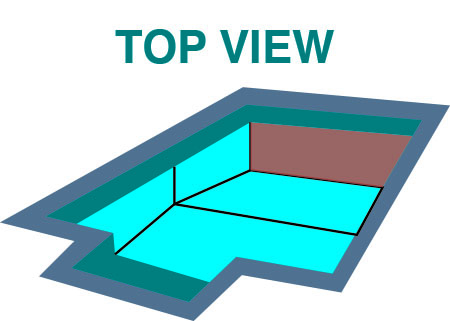 |
|
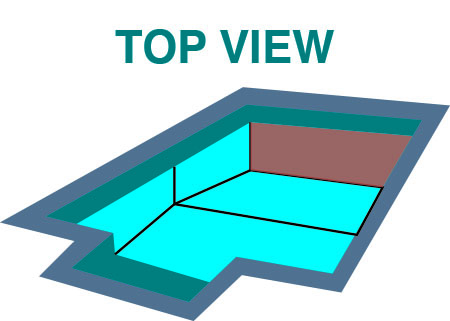 |
Shallow End (Play Area) - in a pool with multiple depths, this is the end of the pool that is the least deep. | |
| SF1 Corner - Some Polynesian pools have diagonal corners at the top of the panel which taper down to form a V shape, making the corner square at the bottom of the panel. These should be ordered as square corners, since it’s the bottom of the corner that determines how the liner floor will be cut. | 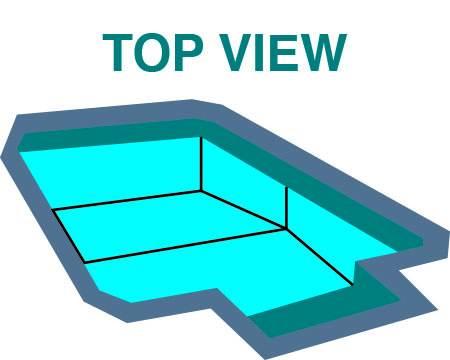 |
|
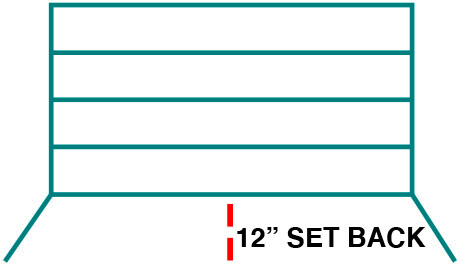 |
Set Back - not length of diagonal, it is the distance that a step, bench or sundeck is set back from the wall. |
|
| Bowled Out (Soup Bowl / Parachute) - this is when the deep end hopper is not well defined but is more rounded out. |  |
|
| Winter Cut / Summer Cut – We require the actual measurements. If you give us the actual measurements and the liner doesn't fit, it is our fault. If you try to adjust the measurements and the liner doesn't fit it is not our fault. |
When you subscribe to the blog, we will send you an e-mail when there are new updates on the site so you wouldn't miss them.

